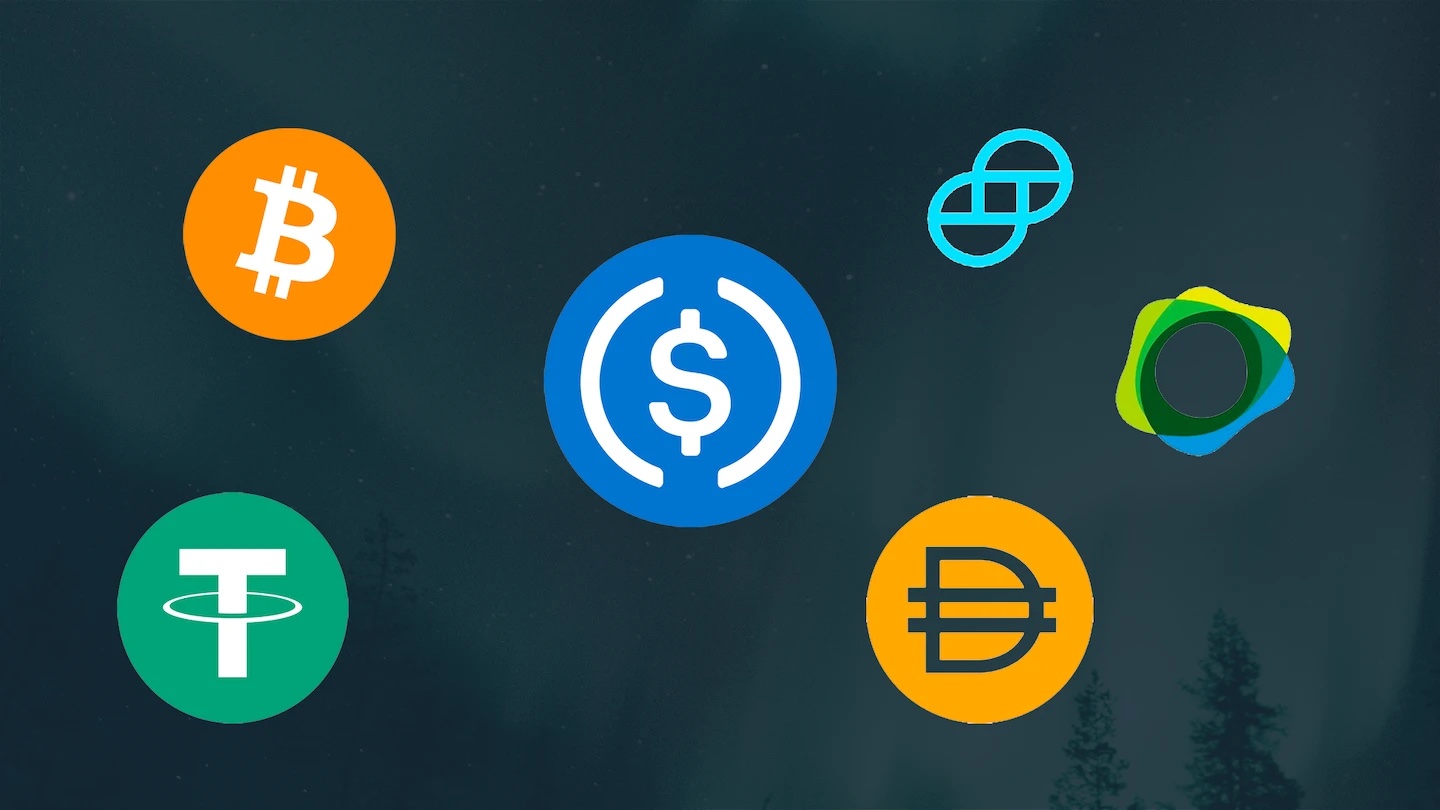Could stablecoins disrupt instant payment schemes?

Context
Stablecoins 1 What is Stablecoin? “A stablecoin is a digital asset that remains stable in value against a pegged external traditional asset class.” are an alternative means of storing and transferring value usually pegged to a fiat currency (or other relative stable asset) using distributed ledger technology (DLT) solutions. The explosive growth in the number and usage of stablecoins and their widening potential for positive use cases are attracting the eye of regulators as shown in this recent quotation from the US Federal Reserve: “In the past year, USD-pegged stablecoins circulating on public blockchains have seen explosive growth, with a combined circulating supply of nearly $130 billion as of September 2021 – a more than 500% increase from one year ago…[additionally,] payments companies could use an internal, permissioned DLT to settle payments efficiently, which would be conceptually equivalent to a stablecoin.”
But how might the growth of stablecoins affect the deployment of instant payment schemes (IPSs)? Are they more likely to disrupt or complement them? The newer generation of stablecoins is already starting to offer competitive functionality in some use cases. But there remain important questions to address before we can conclude that they will work at large scale; and they may end up as complements rather than substitutes to instant payment schemes. Before we get to those questions, let’s consider first how far stablecoins have evolved.
The recent evolution of stablecoins
Stablecoins are part of the third generation of the application of decentralized ledger technology (DLT) to financial use cases, which started with bitcoin in 2008. The earlier generations suffered from a number of disadvantages which restricted their usefulness for payments, including:
- Massive price volatility2See Crypto Crash Erases More Than $1 Trillion in Market Value: while this may be good for day trading models3e.g. via deep learning, it does not play well with international or even domestic settlements4El Salvador, as an extreme example, made Bitcon their legal currency and are experiencing significant pains. As one merchant noted, “We were losing money because of the way the currency loses value…it was difficult to maintain our business like that.”;
- Relatively low transaction speeds5See MIT’s experiments with non-blockchain CBDC technologies & high transaction rates: higher latency6Measured by laod time( the response time, in milliseconds) and block-height recency (how close one is to the most up-to-date information that the blockchain has available) can serve to compound the aforementioned effects of volatility. While Ethereum’s (ETH) “gas” model partially addresses this by allowing to pay more for faster settlement;
- Energy consumption: The proof of work model on which both BTC and ETH are based requires substantial energy hence has substantially negative environmental effects.7See CCAF bitcoin energy consumption index and Columbia University’s report on this topic; in Finland, mining (proof-of-work) based crypto assets are outright banned Ethereum’s transition to the more efficient proof of stake model is progressing8See ETH’s proof of stake tracker and tech checklist but apparently more slowly than initially projected.
Today’s stablecoins exhibit novel features which start to address these shortcomings. They are designed to limit volatility in value, allowing for a reliable medium of exchange and value storage rather than speculative investment. Additionally, alternative consensus mechanisms address latency, energy consumption, and scale.
Fiat-backed stablecoins are by definition pegged to a currency, always recorded using DLT, usually backed by reserves,9Reserves can be public (e.g. cash-equivalent), public algorithmic (i.e. crypto), or institutional/private (e.g. bank-issued). See table 1 of the US Federal Reserve’s 2022 report and CB Insights’ stablecoin report for details and implications, respectively. and typically built and/or managed by private sector institutions. A Central Bank Digital Currency can technically also be considered to be a stablecoin, but instead of trusting a third party to issue the coin, the trust is placed with the same issuer as the fiat it is pegged to–namely, the central bank. This reduces the risk of manipulation of reserves and resulting instability that is possible in many poorly-governed or insufficiently-backed private stablecoins. On the other hand, private sector stablecoins are typically directly programmable and allow for greater flexibility (e.g. via composability of services10Here we take Chris Skinner’s definition of composability in that “stablecoins can function as self-contained building blocks that interoperate with smart contracts (self-executing programmable contracts) to create payment and other financial services”) compared to what CBDCs may offer. However, CBDC offerings are likely to expand too: the Riksbank (central bank) of Sweden has recently released a report on the findings from the second phase of its eKrona project, proposing to explore further the ability of the technical solution to offer programmable money and payments.
Launched in 2018, Hedera is one example of a network supporting this third generation stablecoin offering, which has addressed some of the problems encountered by earlier offerings:
- It has a more decentralized, diverse, international governance council
- It employs a novel, more environmentally friendly non-blockchain (but still DLT) consensus mechanism;
- And it offers increased technical/cost efficiency.
Hedera has rapidly demonstrated early success in enterprise applications, (e.g. demonstrating an international transfer via pilots with Korea’s Shinhan Bank and South Africa’s Standard Bank), and traditional stablecoin offerings (e.g. USD Coin/ USDC). Most recently, Hedera has announced a collaboration with Emtech to pilot CBDCs in ten jurisdictions, within the context of their broader partnership’s, with particular emphasis on African and Caribbean countries.
In summary, the latest family of stablecoin solutions like Hedera’s offer lower latency, lower costs, and lower energy consumption, all better conditions for payment options than the disruptive blockchain generations that preceded them.
Emerging stable coin payment use cases
Not surprisingly, the users of third generation stablecoins like Hedera’s have targeted cross border transfers. The process of moving money crossborder remains suboptimal for most senders and receivers due to high costs, slow speeds and limited visibility. SWIFT, the dominant cross border payment messaging system, has improved its game on timing, security and visibility of payments through its service called SWIFTgpi, making more payments closer to real time in clearing. Still, it doesn’t address the cost problem at the heart of cross border payments: the need for participant institutions to maintain vostro/nostro accounts in multiple currencies or else more commonly use the correspondent banking network for settlement. The costs associated with these forms of settlement can run as high as 61% of the costs of a cross border transaction. Stablecoins like those built on Ripple’s network via their XRP bridge currency can reduce that cost element substantially by offering near simultaneous settlement.
While cross border payments therefore offer more attractive margins for stablecoin deployments to start out with, stablecoins can also alleviate delays in settlement associated with deferred settlement via the country’s Real Time Gross Settlement (RTGS) used by many IPSs. They may also alleviate the stranglehold on direct participation in an IPS exercised by banks, which often results from the requirement of being able to settle using the national RTGS system, which in most cases remains limited to banks only.
Not surprisingly, there are already examples of fintechs facilitating person-to-person (p2p) & consumer-to-business (c2b) domestic payments including Saldo in Mexico using Stellar, then USDC on Monero and Waya in Ghana already integrated with Ripple and Stellar. But stablecoin solutions are also increasingly being trialed by banks too, where national regulators allow them to do so. For example, among large banks, Wells Fargo is piloting solutions like Digital Cash, remarking that “it’s faster than SWIFT, cheaper and definitely more efficient” and JP Morgan Chase has launched JPM Coin & ONYX for international & domestic needs.
In the Philippines, UnionBank’s PHX stablecoin is explicitly designed to enhance financial inclusion via rural banks in the Philippines but “designed to be interoperable” for global integrations (on their i2i platform, powered by Kaleido SaaS via the ETH blockchain). This i2i platform enables Unionbank to extend access to rural banks which might not otherwise qualify to participate in InstaPay – Philippines’ instant payment scheme. This is an example of a complementary solution of stablecoin and IPSs.
In principle, it would be possible to establish the equivalent of a domestic payment scheme using a local stablecoin as UnionBank does. Measured against the Target Product Profile characteristics adapted for inclusive payment systems, the stablecoin scheme could at least match on availability and accessibility; and has the potential to be offered at lower cost by reducing the settlement lag. For domestic instant payments, however, the additional costs of the settlement leg are substantially lower than for cross border payments.
The tradeoff which needs to be navigated then is the potential for stablecoins to reduce costs versus the risks of alternative models of governance, as stablecoins are typically not fully regulated under existing payment laws (though their potential issuers may be). Many jurisdictions are battling with defining them clearly. These risks currently overhang their wider acceptance.
At the same time, these risks are also partly why the issuance of domestic CBDCs could be game changing, especially in jurisdictions which lack instant payments. If the features of a CBDC can indeed replicate what is offered by instant payment schemes, but add advantages like instant settlement in a currency which is backed by the fiat issuing authority and therefore trusted, then they could indeed be alternatives to IPSs. There is currently diversity among the active CBDC projects listed across 97 jurisdictions on CBDC Tracker. Many focus first on domestic payments (e.g. Ghana’s eCedi, Philippines’ Project CBDC-ph), while others state their intention to expand domestic solutions’ to realize potential for cross-border interoperability (Nigeria’s eNaira Design Paper explicitly accounts for this). Still other offerings bake in cross border bridges from the start such as BIS Innovation Hub’s mCBDC Bridge, the Project Dunbar pilot involving APAC and SSA countries, and other exploratory projects with R3 Corda & Quorum.
Questions to address before stablecoins can achieve scale
As DLTs continue to evolve in sophistication and security, the winning model in domestic payments will likely be determined by which model – account based or token based payments – best addresses the needs and challenges of public sector regulators, private sector stakeholders, and end users from the general public.
First, for private stablecoins, there needs to be regulatory certainty before there can be widespread acceptance. This includes clarity on whether they are considered a security or a utility: in the US, this means the Securities and Exchange Commission (SEC) coming to a decision on the status of Ripple to end the uncertainty. In other countries, the disparity in positions is even greater. In Ghana, for example, the BOG already has e-money regulations in place since 2015, but Ghanaian SEC currently considers crypto more like a volatile and risky security, and admit that new regulation is likely to be needed. Existing initiatives like the Crypto Rating Council’s “Howey Test” can serve as one quantitative factor in differentiating securities from utilities.
Secondly, private stablecoins will need to have governance frameworks which allow for controlled-risk innovation while enabling regulators to feel confident in enforcing their mandates. In the US, this means starting by allowing trusted entities such as banks to run stablecoin nodes. Alternatively, in Mexico, the so-called “Fintech Law” virtual assets clause attempted to carve out space for new players, with mixed results due to ambiguities in definitions. In Ghana, the Ghanaian Sandbox was created with “preference to products and services leveraging blockchain technology” and more, and the BOG already has a process in place for testing that was used to launch the e-CEDI (run via a partnership by a fintech).
Ultimately, adequate regulatory oversight will require new supervisory frameworks and “SupTech” solutions. Modern approaches like embedded supervision can be applied if data is on a public ledger, with baked-in reporting as an option for permissioned chains.
For the wider usage of both privately and publicly issued stablecoins, users will need to trust these solutions, trust and privacy implications need addressing. In addition to better onboarding education and disclosure, the US Federal Reserve has noted that explicit broad consultation with the general public and key stakeholders is essential; and that CBDC and other stablecoin solutions should be privacy-protected, intermediated, widely transferable, and identity-verified. As a nuanced component of this, it is critical to examine privacy implications of token-based (more like cash) vs account-based implementations (attributable) as a critical determinant of privacy, and thus in competing with cash and other digital offerings.
User experience must also improve. Beyond banks embedding stablecoins as an option alongside wire transfers, ACH or domestic instant payment services like Zelle in the US, they should be seamlessly integrated across all payment interfaces. As the CEO of Silvergate observes, “Ultimately, once you’ve put $1 into the system, if everybody is connected, then there’s no reason why I can’t take $1 that’s in my Starbucks app and transfer it over to Uber so that I can use it to pay for a ride, because there will be this rail that exists and a dollar is a dollar. That’s the vision.”
Conclusion
Stablecoins are already starting to disrupt cross border payments because the business case of both issuers and users to adopt them is strongest there. However, their functionality does not end there: they also have the potential to be applied to domestic instant payment schemes on a large scale, provided certain questions raised here relating to regulation, governance and user acceptance are addressed. The effect on IPSs may be complementary, as in the Philippines example of i2i extending the reach of instant payments to include more institutions; or competitive, if a domestic stablecoin were to cut into the usage of the domestic account-based IPSs or indeed to change the case for setting up a new IPS.
In this respect, how central banks choose to develop their CBDC offerings will make a big difference. There is currently a highly competitive race between public (CBDC) vs private (stablecoin) implementations, with each pushing the other forward. Similar to the fintech/bank competition, it is unlikely that one or the other will dominate 100% of the market where both are allowed, but rather that they’ll reach differing equilibriums in each market depending on regulation, private sector incentives, and value to end users.
However, with both private and public stablecoins, and indeed with IPSs themselves, the question has to be: to what end? Beyond all of the technical Key Performance Indicators (KPIs) and competitive races, it is also critical to assess the effect on wider policy objectives, including financial inclusion. Chris Calabia has listed five questions to determine whether stablecoins can help advance financial inclusion. Clearly, some central banks already think that CBDCs can help. In a recent BIS survey of nine central banks exploring retail CBDCs, the goal of financial inclusion was very much on their minds. If these aspirations are borne out in practice, then the new forms of payment and money may indeed change the landscape for financial inclusion in the years to come.



